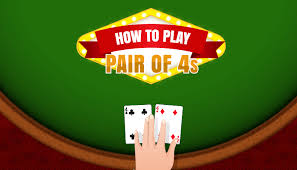I have often wondered how many people play AA, knowing they are ahead, when really they are not. AA is just a trap, that’s what they think. I only point this out to raise your consciousness. AA is a very dangerous hand, one that should rarely be played in most situations. It is my opinion the best hand in poker is QQ, however, in situations where you can pull a lot of weight, and your aces will pay off, AA can still be a trap.
Snyder’s AA is a trap hand in that you want to get as much in the pot pre-flop, as possible. You see people try to limp in, or call with AA, and then raise on the flop. AA is not a particularly good hand to try and push open for a raise pre-flop. It’s better to try and get straights or flushes, and then open up the hand on the flop. If you raise pre-flop, you are just asking for trouble. A raise of 3-4x the blind is no problem, but an all-in raise is a clear show of strength.
Pre-flop, you want to look to play a more normal game. You raise pre-flop, you stay in the game, you raise pre-flop, you look at the flop, and you bet out. That’s a good normal game, but what you don’t want to do when raising pre-flop is limp in. That is not to say that you shouldn’t call a raise if you have some sort of hand, but you should be very picky. Let your opponents make mistakes and lose to big raises.
When you raise pre-flop, you should make a raise that’s 4-5x the big blind. If the table is very tight, and you feel that you can steal the blinds easily, go for it. But, anything less than a big raise is not optimal. Raise pre-flop for quality reasons, and don’t be concerned with how many chips you steal, just generally raise to reduce the number of players in the game.
When you raise pre-flop, make a moderate raise. Not too high, not too low. Usually double the big blind or 3x the big blind. This builds a bigger pot, and also helps conceal the strength of your hand. Depending on the types of hands you get, you should also consider getting in cheap in case you getammy hands like top pair, or an over pair.
Unlike the previous hand, you want to get a little bit of money in the pot pre-flop, not all of it or none of it. Because, once again, you want your opponents to make mistakes and to have their flops reverse engineer by the way your hand played. You don’t want them re-raising you every time you come out firing with Ace King. Get a piece of the board and try to get a nice sized pot. After all, you want them to think your Ace King is really a pair of Aces.
When you raise pre-flop, you can narrow the range of hands for your opponents to call you with. If you have AA or KK, you can hook the tight ones from the cutoff and let them make a fiddle or fold to you. If you see skids on the board, you will know who to target and who not.
Always consider throwing in a small raise of 1-2x the big blind if you are first in. It helps to get a cheap flop, but it also opens up your game for attacks. And, if you do get called, your Ace-high is still good. Many people forget this, and when they raise you all-in, you flat call with a shrug and then, as I like to say, “Wampa calls Pokerace99“. In these situations, you are actually ahead. You paid a small amount to see the flop, so why not play your two pair stronger?
These small adjustments to your game are the secrets to making pre-flop decisions more profitable. Try them and your bankroll will like you for a long time.
And, when you finally understand post-flop play to its fullest, you can sort of play these same moves as a semi-bluff. Say you have raised pre-flop, then on the flop, you get a re-raise. It looks like you might be behind, but in truth, you are slightly ahead. In this case, look at your hand, think about how you lost the blinds, and then think about what you can do to win the pot. You did your best, and you probably think you can win the pot. Here, you are ahead.
